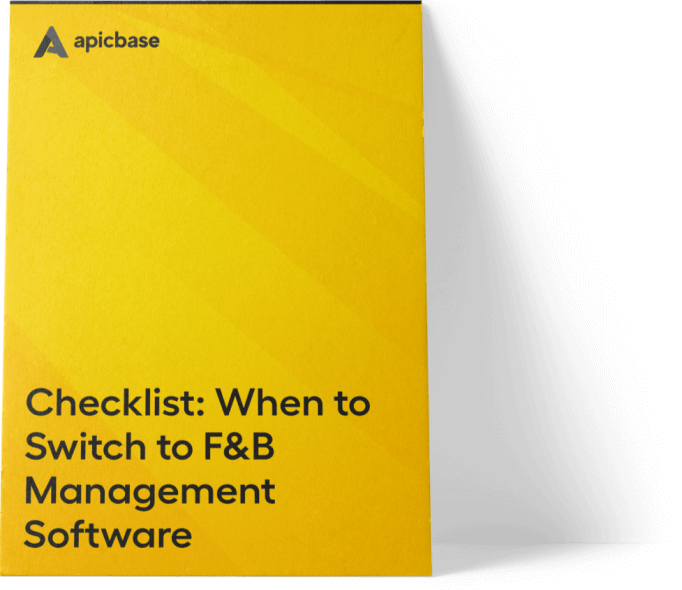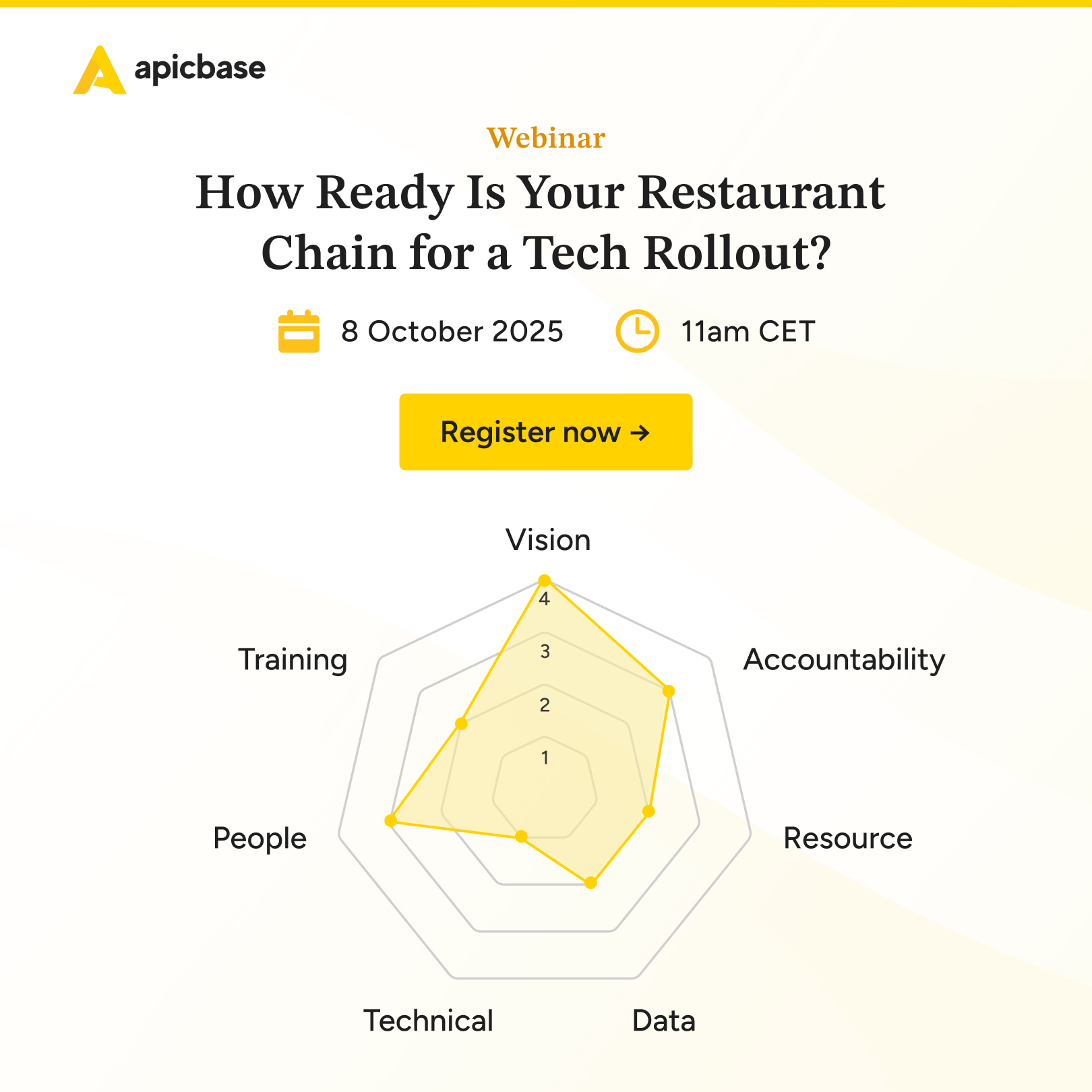Professional kitchens are digitizing rapidly. The big question is: when is the right time for you to invest in specialised kitchen software?
When do you trade in Excel spreadsheets or pen and paper for automated food cost calculation, smart ordering and digital inventory?
We talked to chefs, F&B managers and food service professionals and discovered eight telltale signs to know if restaurant management software is the thing for you.
8 signs restaurant management software is the thing for you
- Workforce turnover is costing you lots of money
- You do not know your food costs (or cannot monitor them)
- You lose money writing off unused inventory
- Ordering is time-consuming and often inaccurate
- Allergen reporting keeps you up at night
- You open a second or more outlets
- You are not sure consistency is guaranteed in every outlet
- Your software systems don’t talk to each other
Let’s dig a little deeper into why foodservice professionals start working with software to manage their restaurant kitchens.
1. Employee turnover is costing you lots of money

Is there a fear that a permanent employee will resign? Worry when staff gets sick?
Employee turnover in restaurants and the hospitality industry in general is a major problem. And as an entrepreneur, you are often left in the dark about the operational work. If you manage multiple locations, that feeling of uncertainty grows exponentially.
- Where are our recipes stored, and how are they created?
- Have the sauces been prepared?
- Has the stock been counted?
- Where is the purchase order for tomorrow’s delivery?
Just like any manager you need control. The business needs to run smoothly even when a valuable employee can’t come to work or decides to quit.
You rely heavily on your employees. That makes your business vulnerable. Finding excellent kitchen staff is extremely difficult in any case. When someone leaves the company, knowledge and experience are lost. And it takes a long time before someone new is up to speed.
Restaurant management software has a cloud-based recipe library and keeps track of everything: recipes, prep lists, orders, stock, food cost calculations, margin checks – nothing is ever lost.
The new guy can pick up right where the previous one left off. And thanks to practical training modules, new personnel is quickly brought up to speed about the recipes and methodologies.
2. You do not know your food costs (or cannot monitor them)
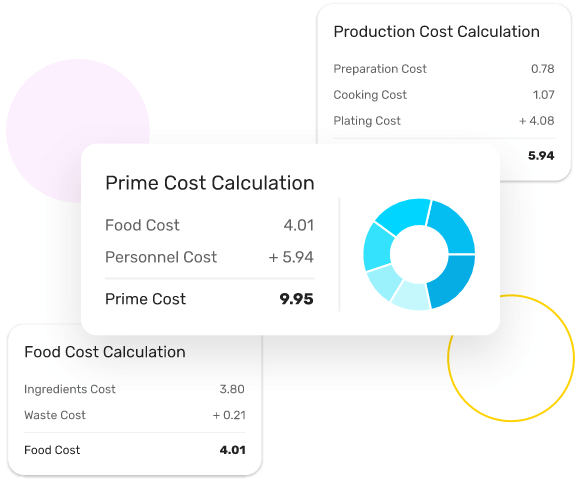
How much do you earn on a chocolate dessert? Is it 2 euros, 5 euros or nothing at all? Maybe the selling price is too low and you are actually losing money.
In addition to finding staff, food cost control is the biggest challenge for every hospitality business.
In many restaurants, food cost calculation remains guesswork. Understandable, because there are so many parameters and it seems that you can never fully chart the costs.
It is tempting to use averages or omit individual costs (how long does it take to make that chocolate dessert?).
The annoying thing is that you never really know how much each item on the menu yields. And you cannot check whether your bottom line is stable.
Accuracy makes all the difference.
Restaurant management software automates food costing, and margin control.
The software calculates the cost per portion and allows you to compare recipe performance and engineer menus for optimum profitability.
That is a big worry less.
If the price of ingredients changes, the system automatically adapts all your recipes, costings and margin calculations.
Accurate food cost calculations offer a reliable basis to determine your margins. The system automatically detects when you lose profit.
3. You lose money writing off unused inventory
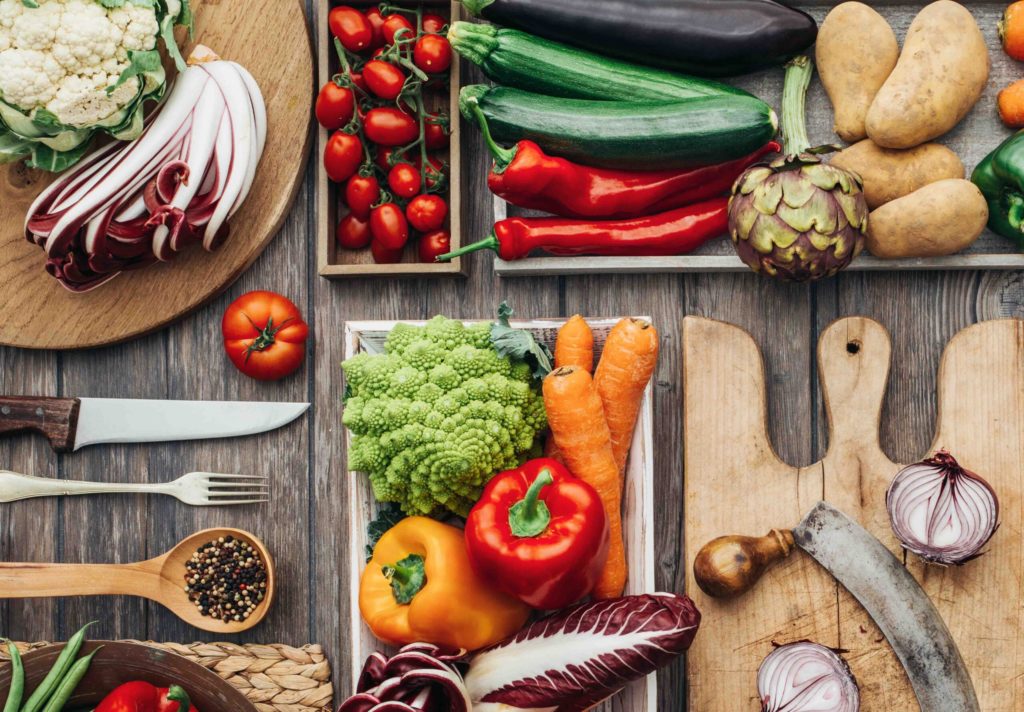
Does the stock feel like a black box to you? You order every day, but what happens next is a big question mark.
Keeping track of inventory is critical for food cost control.
The inventory is your financial cornerstone. Everyday capital is locked in storerooms and fridges. You definitely do not want to write unused inventory off. Food cost would go through the roof.
In addition, inventory is volatile. With every sale the composition changes. That makes it difficult to keep the stock status up to date.
A daily count is often the only way to keep track, but that takes time. Time you may not have.
The trick is to have just enough stock for peak moments, but certainly not too much. A digital system helps you get the proportions just right.
With a digital restaurant inventory system, you are always on top of stock quantity and stock value.
Thanks to the connection with your POS, the software automatically adjusts inventory with every sale and status reports are ready when you need them.

4. Ordering is time-consuming and often inaccurate

Does this situation sound familiar?
After the mise en place, you count the stock and tick off all items and volumes in your ingredients book. Next you open the laptop and note down the orders. One supplier expects an e-mail, with another everything goes through a webshop and with a third you give the order over the phone. Occasionally even a fax goes out the door.
Ordering is cumbersome. Head chefs quickly lose an hour a day.
With restaurant management software ordering is done in five minutes.
You skip the time-consuming components because most of them run automatically. The system creates an order suggestion based on your digital stock status. You check and confirm. The software then sends the order to your supplier of choice.
5. Allergen reporting keeps you up at night
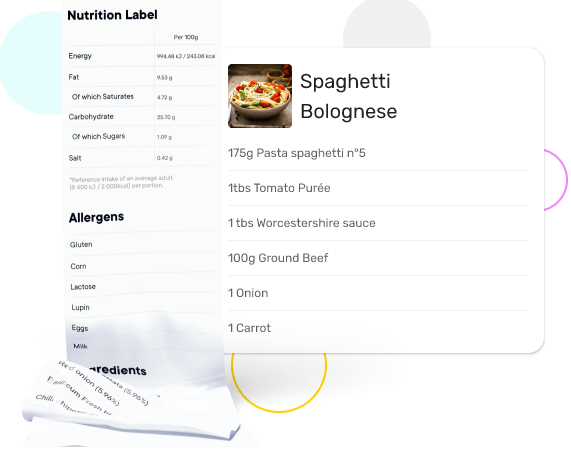
Reporting allergen and nutritional information is essential, and in some territories, an absolute legal requirement. The management of this information gives many entrepreneurs and even scale businesses a big headache.
Robust procedures are necessary to give customers accurate information, especially when the menu changes or recipes are adjusted.
Keeping the allergen info with your recipes up-to-date is an ongoing assignment. A food management system does it automatically.
The software stores all ingredients. It retains supplier allergen data and checks official external databases.
If your recipe changes – a new sauce or ingredient – the nutritional value information will be adjusted immediately.
Cloud storage of the allergen data allows every outlet to access the latest information. Employees can immediately check the allergens and nutritional values on their tablet.
Kitchen staff prints allergen labels with a simple touch of a button.
In addition to printing allergen labels, a quick note on staff training – it is paramount your employees know how to read these labels. They should know the 14 common food allergens, in which ingredients they are found and how likely it is they’ll serve someone with a particular allergy.
6. You open a second or more outlets

Restaurant management software is a must when opening a second location because you don’t manage the day-to-day kitchen processes yourself, but leave it to others.
Three challenges present themselves immediately when opening a second outlet:
- How do you keep an overview?
- How do you pass on knowledge to new employees?
- How do you ensure that employees work efficiently on location?
The answer to all three questions is standard procedures. Procedures guarantee that each site manager works just like you planned.
With restaurant management software, you quickly develop standard procedures for each outlet.
The system contains a recipe library, spec book, training manual, task manager, food cost calculator and more for each outlet.
Cloud-based restaurant management system allows you to monitor centrally and manage decentrally.
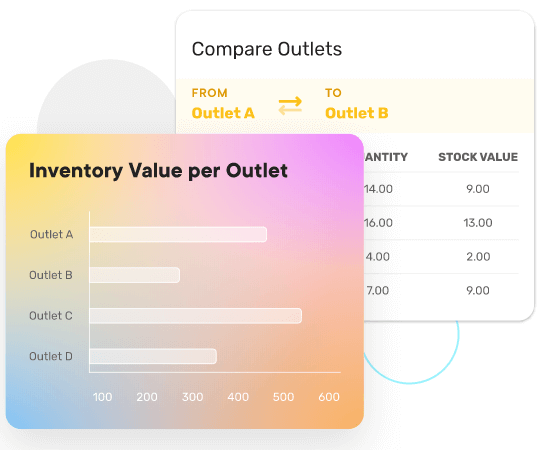
7. You are not sure consistency is guaranteed at every outlet

Consistency is crucial in the development of a hospitality brand. Customers expect the same quality and recognizable flavours at every outlet.
Culinary consistency requires constant monitoring and bulletproof staff training. It’s a time-consuming but essential part of the job.
And an often costly part of the job as well, certainly when executive chefs need to travel back and forth between worldwide outlets. Chefs are superheroes, but even they can’t be everywhere at the same time.
Bringing new kitchen staff up to speed with recipes and methodologies should be therefore be done as efficiently as possible. The more time it takes to train staff, the higher the costs. And these quietly munch away your profits.
When customer experience is inconsistent, customer loyalty goes down.
Culinary consistency is guaranteed at every outlet with restaurant management software.
The recipe database, prep lists and allergen information are accessible at every location. Executive chefs can add plating photos, step-by-step production videos and detailed descriptions, and make them available to chefs anywhere in the world, without ever leaving their homes.
8. Your software systems don’t talk to each other

Modern technology like POS-systems, planning software and digital ordering modules are of great value to professional hospitality businesses.
It’s frustrating, however, to realise the different systems don’t integrate. You end up entering the same data over and again or copying them from one system to the other.
It’s a waste of time, and because the systems don’t talk to each other it’s impossible to get useful performance insights. For example when your ordering system has no clue about what’s going on with inventory. How are you supposed to optimise orders and minimise food costs?
Powerful restaurant management software operates as a platform. It brings all important data together.
Managing all kitchen processes – menu-engineering, procurement, sales data, inventory – in a single dashboard is a massive time-saver for head chefs and F&B managers.
From recipe creation to stock control, everything is kept together. The dashboard offers unmatched overviews and reliable insights.
Conclusion
All the food service professionals we talked to had one thing in common. At some point, they felt they were getting buried in spreadsheets and notebooks. Keeping track of margins, food waste, inventory, ordering, and so on is crucial for profitability but also time-consuming. And often inaccurate.
That is when they realised that to continue to grow, they needed to streamline kitchen processes and get reliable business insights. Pen and paper went out of the door, and restaurant management software took over.

